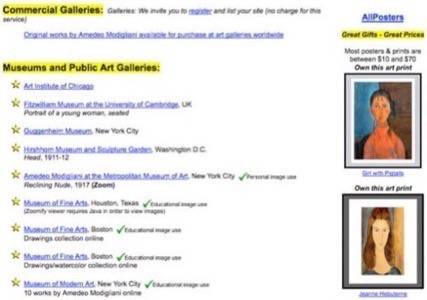In our recent posts about Structured Data, we’ve emphasized that most of the current initiatives have been around uploading new data to the Web – whatever the format. The U.S. and U.K. governments have led the way with their ‘open data’ websites, but much of that data isn’t ‘linked’ yet. In other words, it’s online – but siloed. So how do we get to the next stage of the Semantic Web, linking disparate data sets together so that people can begin to use that data?

The tipping point for the long-awaited Semantic Web may be when you can query a set of data about someone not too famous, and get a long list of structured results in return. I’ve decided to term this ‘The Modigliani Test.’
Amedeo Modigliani is one of my favorite artists. He was moderately famous during the early 20th century and has something of a cult following nowadays. But he’s not Da Vinci or Picasso famous. What I’d like to do in a Semantic Web is type the following query into a search engine and get back a large list of results: tell me the locations of all the original paintings of Modigliani.
As of today, there’s no place to type that query in and get a list of structured data. The closest I can find to doing that is the Artcyclopedia entry for Modigliani, which has a list of locations for Modigliani artworks. It’s great that they have the location data listed on one web page. However it’s not structured data, so we can’t query it. There’s also not much order to the data, we have no idea if this is a comprehensive list, it’s not verified data, and so on.

In summary, there’s a lot of data on the Web about the location of original art works – but much of it is in traditional ‘document’ web pages. What we’re after is a giant database of art works, which anybody can query and re-use.
Here’s an early, overly geeky view at what a Linked Data of painting locations would look like (hat-tip @dakoller):

The above is a far from comprehensive list of art works by Hieronymus Bosch (a search for Modigliani, by the way, brought up zero results). Plus of course we need a much more intuitive UI, so that non-geeks can use it too.
What do you think, when will The Modigliani Test be passed on the Web?





















